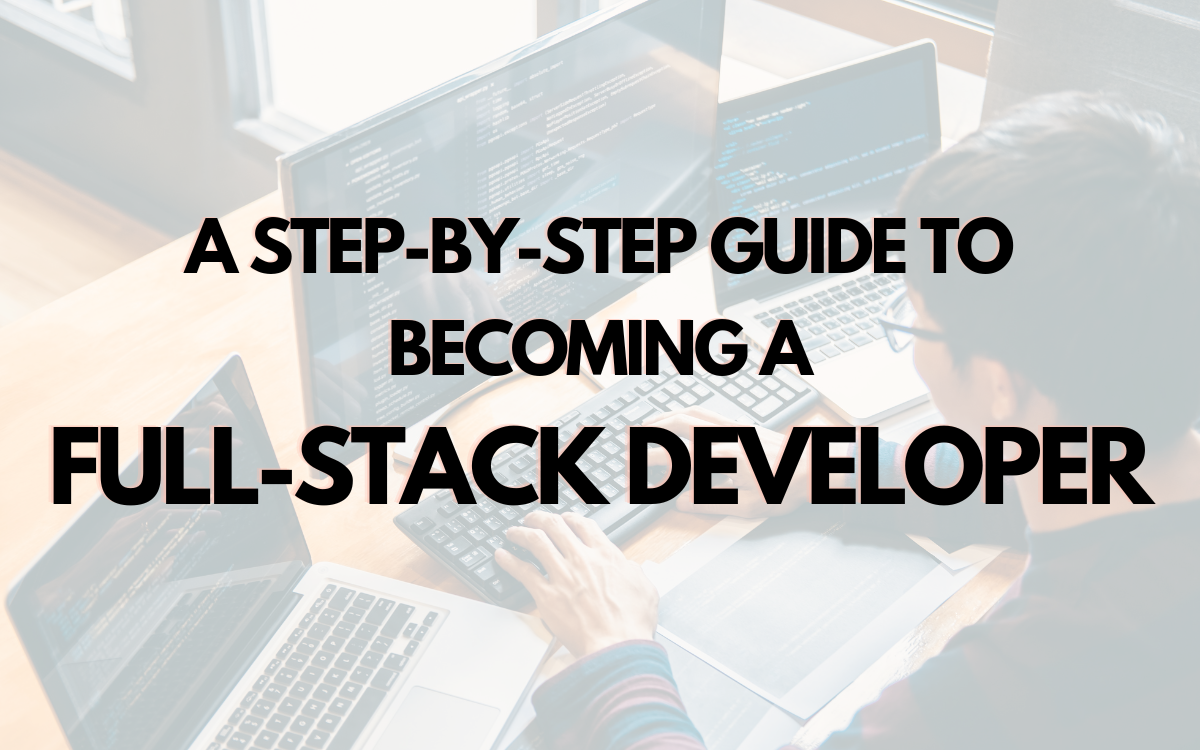Our world is becoming increasingly digital. Applications and websites abound in our daily lives. When you think about it, practically everything in your life is probably a software product. Everything is a web application, from your morning alarm clock to the apps you used to keep in touch with your friends and family, such as Facebook and Instagram, to YouTube, where you presumably spend hours viewing movies. So, who is responsible for these apps? Who is responsible for ensuring that you see new photos or news on your Facebook and Instagram feeds every time you refresh? In this article, we’ll look at full-stack developer, including who they are, what they do, the skills required to become one, the job’s roles and responsibilities, and so on. Click on the link, if you are looking for java full stack developer course in pune.

What is Full-Stack Developer, and how do they work?
Web developers are responsible for the creation and maintenance of the websites and applications that we use on a regular basis.
Web developers are grouped into the following categories based on their participation in the entire web development process:
- Developers that work on the Front-end
- Developers that work on the Back-end
- Developers that work on the Full-stack
Let’s take a look at what front-end and back-end developers do before moving on to full-stack developers. The appearance, layout, server-side technology, and other aspects of a website are all important.
Front-end developers are responsible for the overall user experience and aesthetic features of a website.
Back-end developers look after the technology that keeps the website up and operating.
Full-stack development combines front-end and back-end development.
Full-stack engineers are web developers who are knowledgeable about both the front-end and back-end processes. Full-stack developers’ roles are more complex than other developers’ since they require knowledge and skill from both ends.
What is a Full-Stack Developer and what does he or she do?
Websites and web applications can be built by full-stack developers on their own. They know how to code in HTML, CSS, and JavaScript, which are used on the front end of web development. They are also proficient in back-end web development languages such as Ruby and Python.
Full-stack developers save time and money for a company because they can conduct both front-end and back-end development on their own.
To Become a Full-Stack Developer, What Does It Take?
In the realm of web development, full-stack engineers are in high demand. They are frequently hired by small firms to handle the entire website development process.
- The first step toward a full-stack developer profession is to educate oneself. Learn the programming languages and other technical skills you’ll need.
- You can either pursue a standard college degree in computer science or a related field, or you can pursue other options such as self-learning or online training courses.
- Familiarize yourself with all of the prominent technology, but focus on one in particular.
- Gain practical experience after earning a degree or certification and mastering technical abilities. This will assist you in putting your newly acquired information and abilities into practice. Working on projects will assist you in fully comprehending web application architecture and honing your coding skills.
What Does It Need to Become a Full-Stack Developer?
Front-End Languages
- HTML/CSS
HTML and CSS are both widely used front-end languages.The abbreviation for Hypertext Markup Language is Hypertext Markup Language. HTML is used to format the text, colorful images, headings, and paragraphs that you see on a website.
CSS, or Cascading Style Sheets, is used to update and style the text, such as the font type, text size, paragraph spacing, and so on. Its goal is to make web information more aesthetically beautiful and user-friendly.
- JavaScript
If you want to become a full-stack developer, you’ll need to understand JavaScript. JavaScript is a client-side object-oriented programming language. It’s mostly used to enhance the quality of user interaction with an app by adding behaviors to HTML.You’ll also need to know how to use JavaScript technologies like React and Angular as a full-stack developer. Full-stack developers can use JavaScript to create responsive web sites. You must also be familiar with DOM and JSON as a full-stack developer.
- Git and GitHub
Git is a version management system that is free and open-source. Git can keep track of all the changes you make to your websites, programmes, documents, and so on. As a full-stack developer, Git will allow you to keep track of all database changes made to your application. You’ll be able to do a better job and collaborate with your teammates if you’re familiar with Git.
- SQL
SQL stands for Structured Query Language, and it is mostly used to manage databases. It’s a domain-specific language with two primary goals in mind. The first is to work with data stored in a Relational Database Management System and manipulate it (RDBMS). The second is for RDBMS stream processing.
Back-End Languages
- PHP
PHP is a highly compatible back-end programming language that can work well across all platforms from Unix to Windows.
- Python
Python is a simple programming language with a syntax that is similar to English.
- Java
Java serves a variety of functions. It’s used to create mobile apps, desktop apps, and online applications.
To Become a Full-Stack Developer, You Will Need the Following Tools
- Ruby on Rails
This is Ruby-based server-side open-source software. It uses the Model-View-Controller (MVC) paradigm and comes with all of the default configurations needed to create database-backed web applications.
- Django
Python is used to create this web framework. This is also an open-source framework that adheres to the model-template-view design pattern. It is used for server scripting and allows for the rapid construction of clean and useful code.
- NodeJS
This is a JavaScript run-time environment based on Chrome’s V8 JavaScript engine. It allows you to construct dynamic web pages for server-side processes. It drastically decreases the number of codes that must be written to complete a task. It has an event-driven architecture.
- MySQL
This is an RDBMS (Relational Database Management System) that runs on SQL. It’s one of the most popular databases out there.
- MongoDB
Because it is document-based and does not require SQL, this database is designed for modern developers who want to avoid using SQL. It is capable of maintaining high levels of data security. MongoDB is also available as a cloud service.
Become a full stack developer with 100% placement guarantee. At Profound Edutech, we strive to equip the technology sector with highly skilled, goal-oriented, and flexible individuals. We are more than just a computer training facility. Contact India’s best IT Training Institute in Nashik today.


